A tankette for airborne operations
The Soviet ASU-57 emerged from a 1946 specification for an airborne vehicle which can provide a mobile antitank support to the paratroopers. It had to be lightweight to fit in the cargo bay of the transport planes of the time, and be compatible with the parachute pallets maximum payload and was to be armed with a 57 or 76mm gun. Two design bureaus were charged with the project Astrov (OKB-40) in Mytishchi and Kravtsev in Moscow. The first unveiled a derivative of the wartime light tanks like the T-40 and SU-76 and armed with the new 76mm gun D-56T tank gun. However, despite an only 3 mm armor it was still too heavy and was rejected. Anatoly Kravtsev's bureau, on the other hand, presented the amphibious K-7 armed with Charnko's 57mm anti-tank gun Ch-51. It was lighter but still not convenient enough for production.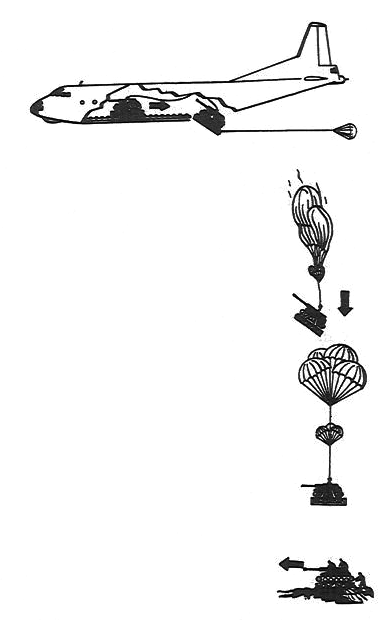
Development
In 1949, the project was relaunched, Nikolaj Astrov being given the task of marrying his model, made lighter, with the Ch-51 main gun, which showed better performances and was much lighter. Under the name of Ob.572, the new hybrid tankette was developed simultaneously as the light artillery tractor Ob.561 (AT-P) to lower the cost by commonality, and eventually after that all test phases were completed in 1949, was accepted into service in 1951 as the ASU-57 (denomination for a light SPG, and the caliber).Design
The ASU-57 was originally designed to be air-dropped alongside troops from the cargo bay of the standard Antonov-12, by means of a rocket-assisted parachute (PP-128-500 or P-7). The main gun Ch-51 was a development of wartime ZIS-2 but crossed with the improvements of the Ch-26 light AT gun. Only the first serie used this model, which was replaced by the Ch-51M with a much shorter double-baffle muzzle brake in 1957. It could fire the standard ZIS-2 57x480R AP rounds, but also the BR-271 and O-271U rounds. 30 were in storage in the hull. To keep the cost as low as possible, the engine was derived from the GAZ-M-20 "Pobeda" civilian car, and most of the parts came from wartime light tanks like the SU-76 and T-40, including the wheeltrain and suspensions. This comprised four rubberized roadwheels, the latter being used as idler/tensioner, and front drive sprockets. The tracks were narrow, and the front part was supported by two return rollers, positioned on either side of the second roadwheel. Suspensions were simple, short torsion bars. The design was so compact and made of welded and bolted aluminum plates, that the hull ended with 6 mm armor at the front, sufficient for small arms fire (in theory). It was completely open and left the crew unprotected over the shoulders, but with a good field of vision and easy access. Outside the crew of three, and despite its small dimensions, it was large enough to accommodate six more men and an improvized APC. All were equipped with a 10 RT-12 radio and TPU-47 intercom. In 1961, the vehicle was upgraded, receiving the R-113 and then R-120 radio, and the driver a TVN-2 night vision periscope.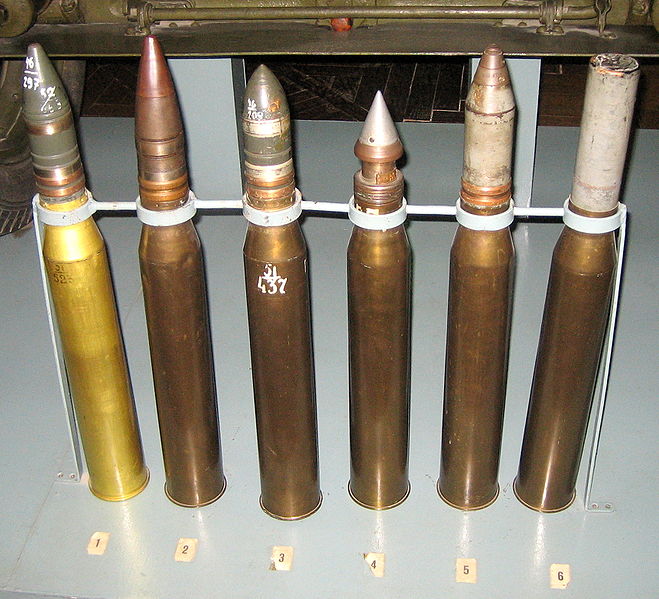
Operational service
The ASU-57 was the first successful Soviet airborne tank design. In the 1930s, when airborne divisions were first set-up and pioneered following the definition of the deep battle concept, many air dropping solutions were tried, with amphibious and light tanks and tankettes, but all failed at the end. In the 1950s, when the ASU-57 was introduced, all airborne divisions received 54 vehicles each. Early tests were performed under the Tu-4 bomber wings. However at the end of the 1950s, only 245 ASU-57 were in service, and the gun, derived from a 1943 design, was seen as obsolete. NATO airborne equivalent was the vastly superior 106 mm recoilless gun. The ASU-57 was kept in service for 20 years, before being phased out in the 1980s, and gradually replaced by the heavier ASU-85, as capacity in airlift cargo capacity was raised in parallel. The arrival of the latter was delayed by the new P16 parachute platform. The first large-scale deployment occurred in the 1967 exercise Dniepr, with the 76th VDD. Outside the An-12, this model could be airlifted and dropped either by the Yak-14 the older An-8. The only operational variant was the command staff vehicle ASU-57KShM, without a gun but with additional radio and signals equipment. Prototypes were also tried, the BSU-11-57F/2T2 107 mm recoilless SPG, and the amphibious ASU-57P in 1951. MMZ built in total an estimated 500 vehicles until 1962 (exact production figures remains unknown).Exports
The ASU-57 was also supplied to Warsaw Pact nations. In 1961-1962, 20 were delivered to GDR. Very little is known about the use of ASU-57 by Chinese forces. Another 200 taken from soviet depots were shipped in 1966 1967-1968 to DPRK. Others ASU-57s were also supplied to Egypt and according to some sources, used during the Six-Day War in 1967. According to Murakhovski, several dozens were delivered to Ethiopia during the War of the Ogaden in November 1977. These were used with Cuban forces in the battles around Areva and Jijiga, in particular at the rear of the Somali forces with the help of the Mi-6 landings. It was used also by Vietnam, and one source states that some took part on the Polisario war, with the assistance of Libya. These vehicles are preserved in various conditions at Kubinka (2), the Central Museum of the Armed Forces in Moscow, Museum of the History of airborne troops in Ryazan, a Private museum of art in the village of Elijah (2), the Museum amphibious combat vehicles of the 7th Guards Airborne Division in Novorossiysk, Base Petawawa Military Museum in Canada, the Military Museum Geydzhtaun base (Canada), Military Museum in Kaunas (Lithuania), and the US Army Museum in Aberdeen.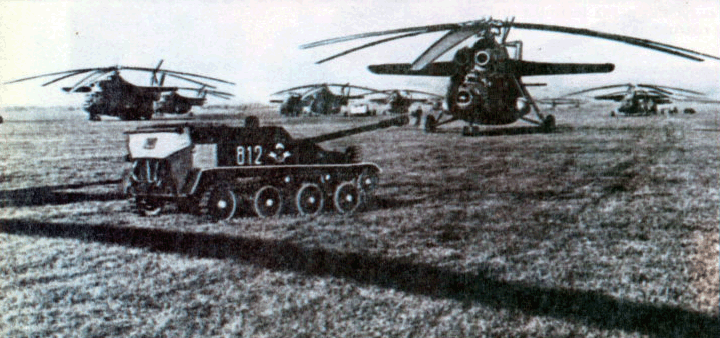
ASU-57 related links
The ASU-57 on Wikipedia Additional informations on krasnayazvezda.com (Fr)
ASU-57 specifications |
|
| Dimensions (L-w-h) | 3.48 x 2.8 x 1.18 m (11.5 x 9.2 x 3.1 ft) |
| Total weight, battle ready | 3.4 Tons |
| Crew | 3 (driver, cdr, gunner)+6 |
| Propulsion | M-20E4 wc gas. 50hp (37.29 kW) |
| Speed (land/water) | 45 km/h ( mph) |
| Range (road/off road) | 250 km (160 mi) |
| Armament | 1x Ch-51 57 mm gun 1x DTM 7.62 mm (0.3 in) MG, 2500 rounds or Heavy 12.7 mm DSHK AA MG - see notes. |
| Armor | 6 mm (0.28 in) |
| Total production | Approx. 500 |

Standard ASU-57, as delivered. Only the rear is covered by a tarpaulin.

Another ASU-57, unknown parachute unit.

ASU-57, unknown parachute unit, 1960s.

ASU-57 now kept at the Parachute infantry museum in Ryazan.

ASU-57 in sand olive livery for operation in Ukraine, summer.

Egyptian ASU-57, war of 1967.
Gallery
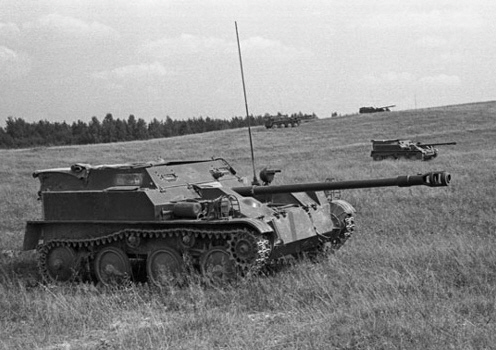
The ASU-57 as built in the 1950s
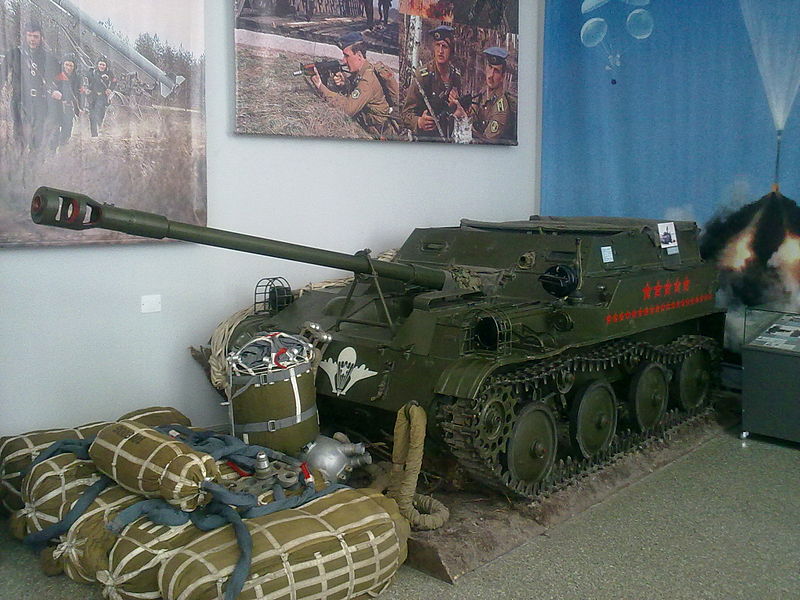
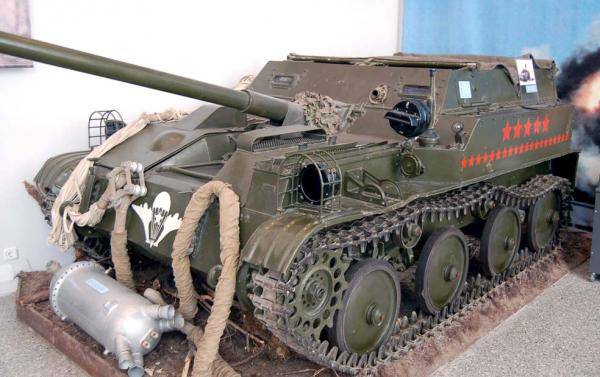
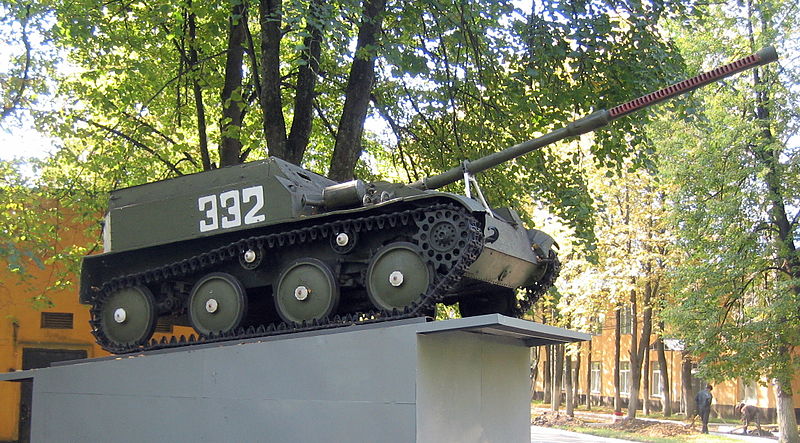
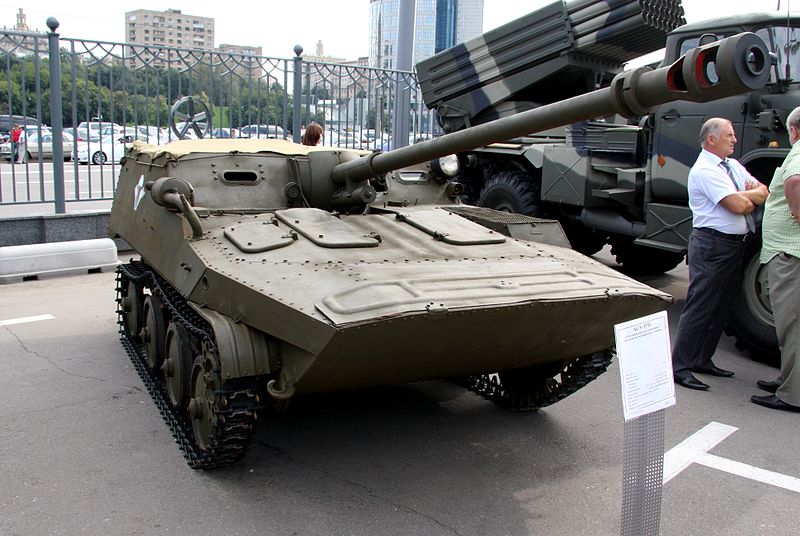
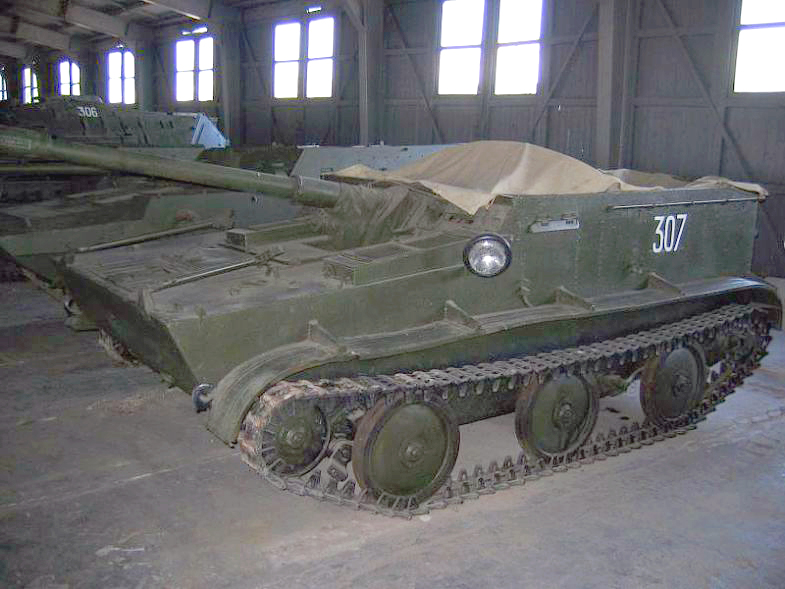

Cold War Tanks


































Cold war tanks posters

Cold War Main Battle Tanks

Cold War Soviet Army

